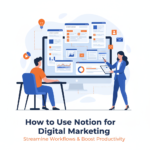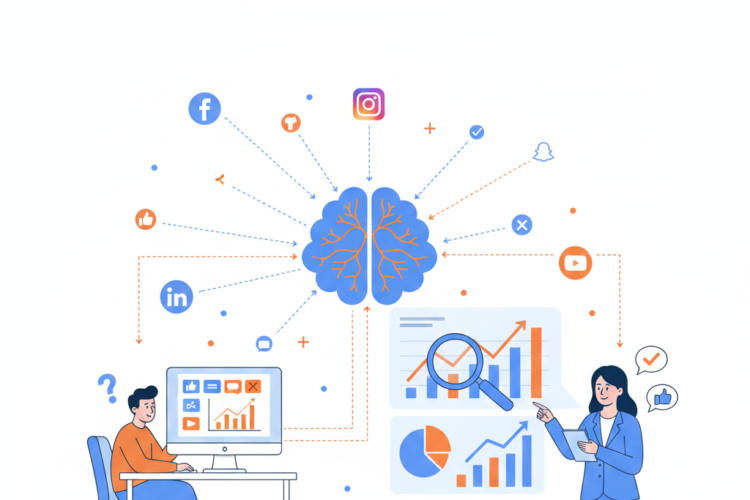
What Is Social Media Analytics?
A Complete Guide to Understanding, Measuring, and Leveraging Social Data in 2025
📌 Table of Contents
Introduction to Social Media Analytics
Why Social Media Analytics Matters
Core Components of Social Media Analytics
Key Metrics You Must Track
Types of Social Media Analytics
Tools and Platforms for Social Media Analytics
How to Build a Social Media Analytics Framework
Real-World Use Cases and Examples
Social Media Analytics vs. Social Listening
Common Mistakes to Avoid
Future Trends in Social Analytics
Final Thoughts
1. 🎯 Introduction to Social Media Analytics
Social Media Analytics is the process of collecting, measuring, interpreting, and reporting data from social media platforms to make informed business, marketing, and content decisions.
It answers vital questions such as:
How is your content performing?
What’s your audience saying about you?
Which platforms deliver the highest ROI?
What are your competitors doing better?
In the data-driven marketing landscape of 2025, social media analytics is essential for strategic growth, not just a vanity scoreboard.
2. 💡 Why Social Media Analytics Matters
| Benefit | Explanation |
|---|---|
| ✅ Performance Tracking | Know what content works and what flops |
| 🎯 Audience Insights | Understand your followers’ demographics, behavior, interests |
| 🔁 Content Optimization | Create better posts, ads, videos using data |
| 📈 Campaign ROI Analysis | Measure reach, conversions, clicks, and revenue |
| 🧠 Strategy Refinement | Data-driven decision making for future campaigns |
| 🛡️ Brand Reputation Management | Track sentiment and identify PR risks early |
In short: what you don’t measure, you can’t improve.
3. 🧩 Core Components of Social Media Analytics
📥 Data Collection
Raw metrics from platforms (likes, comments, impressions, etc.)
🧮 Data Processing
Cleaning and structuring the data into usable formats
📊 Visualization
Dashboards, charts, and tables to interpret performance
🧠 Interpretation
Identifying what the numbers mean, and what they imply
🛠 Optimization
Making changes to strategies based on data
4. 📏 Key Metrics You Must Track
| Metric Category | Important Metrics |
|---|---|
| Engagement Metrics | Likes, comments, shares, saves, replies |
| Reach & Impressions | Number of people who saw the post |
| Audience Growth | Followers gained/lost over time |
| Content Performance | Video views, click-through rates (CTR), saves |
| Traffic Metrics | Website clicks, landing page views (tracked via UTM) |
| Conversion Metrics | Leads, sales, downloads from social platforms |
| Customer Service | Response time, resolution rate (for DMs or social support) |
| Sentiment Analysis | Positive, negative, neutral comments and mentions |
5. 🧠 Types of Social Media Analytics
1. Descriptive Analytics
What happened?
Example: “This video got 15,000 views and 1,300 shares.”
2. Diagnostic Analytics
Why did it happen?
Example: “Posts with user-generated content outperformed branded content.”
3. Predictive Analytics
What is likely to happen?
Example: “Reels on Mondays get 22% more reach.”
4. Prescriptive Analytics
What should we do next?
Example: “Post behind-the-scenes content twice a week for best engagement.”
6. 🛠 Top Social Media Analytics Tools (2025)
| Tool | Features |
|---|---|
| Meta Business Suite | Insights for Facebook & Instagram Pages + Ads |
| Twitter/X Analytics | Follower growth, tweet engagement |
| LinkedIn Analytics | B2B audience insights, company page performance |
| Pinterest Analytics | Pin performance, traffic sources, saves |
| YouTube Studio | Watch time, subscriber growth, retention |
| Hootsuite / Sprout Social | Multi-platform analytics, reporting, competitor tracking |
| Google Analytics 4 | Tracks social traffic on websites |
| Brandwatch / Talkwalker | Advanced sentiment & trend analysis |
| BuzzSumo | Content analytics + competitor tracking |
7. 🧱 Building a Social Media Analytics Framework
Step 1: Set Clear Objectives
Are you trying to drive awareness, leads, engagement, or sales?
Step 2: Choose KPIs
Pick metrics aligned to your objective
(e.g., for sales = conversions, CPA)
Step 3: Pick Tools & Integrations
Use a unified dashboard or integrate via APIs
Step 4: Create Reports (Weekly/Monthly)
Include trends, what’s working, what’s not
Step 5: Iterate & Optimize
Adjust your posting schedule, creatives, targeting, or platforms
8. 📚 Real-World Use Cases
📈 E-Commerce Brand
Used Instagram engagement rates and Shopify UTM links
Found that Reels convert 3x more than photo posts
Increased Reels output → 47% jump in monthly sales
🧑💼 B2B SaaS Company
Monitored LinkedIn CTR and engagement by post type
Realized thought leadership posts outperformed promo content
Adjusted content mix → 26% increase in demo requests
🧑⚕️ Healthcare Provider
Used sentiment analysis to identify pain points in DMs
Automated common queries via chatbot
Reduced wait time → 35% increase in customer satisfaction
9. 🔍 Social Media Analytics vs. Social Listening
| Feature | Social Media Analytics | Social Listening |
|---|---|---|
| Purpose | Measures performance | Tracks conversations |
| Focus | Your posts, engagement, ROI | Public mentions, keywords, sentiment |
| Tool Example | Meta Insights, GA4 | Brand24, Mention, Talkwalker |
| Use Case | Optimize strategy | Crisis management, competitor monitoring |
In short:
Analytics = Performance Tracking
Listening = Brand Intelligence
You need both for a full-picture strategy.
10. ⚠️ Common Mistakes in Social Media Analytics
Chasing Vanity Metrics
Likes without conversions mean little.
Not Using UTM Parameters
You won’t know which social posts drove traffic or sales.
Lack of Benchmarking
Measure against your past performance, not just competitors.
Overcomplicating Reports
Focus on actionable insights, not endless charts.
Ignoring Dark Social
Not everything gets tracked — DMs, shares, and screenshots matter too.
11. 🔮 Future Trends in Social Media Analytics (2025+)
| Trend | Description |
|---|---|
| 🤖 AI-Powered Insights | Automated data interpretation + content suggestions |
| 🎯 Predictive Posting | AI tells you what and when to post |
| 📱 Cross-Platform Attribution | Unified data from Instagram, YouTube, LinkedIn, etc. |
| 🧠 Sentiment + Emotion Analytics | NLP tools that detect tone and mood shifts |
| 🎥 Short-Form Video Analytics | Specific metrics for TikTok, Reels, YouTube Shorts |
| 🧵 Thread and Carousel Metrics | More granular tracking of multi-part content |
12. 🧾 Final Thoughts: Why Social Media Analytics Is Non-Negotiable
In today’s crowded, ever-changing digital landscape, you can’t afford to fly blind.
Social Media Analytics empowers you to:
Know your audience better
Track what works — and scale it
Save money by stopping what doesn’t
Build brand loyalty with precision
Measure true ROI of social media efforts
Whether you’re a startup founder, a brand manager, or a solo content creator — data is your compass.
Without it, you’re just guessing.
Author



